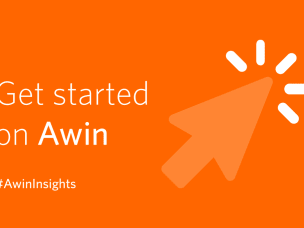A guide to performance marketing
Written by Kimberleigh Gardener on 6 minute read
From customer acquisition to conversion, performance marketing strategies allow you to measure and optimize your user journey every step of the way.

Digital performance marketing opens up a wide world of data-driven capabilities, allowing you to measure and manage results in real time. But what is performance marketing and how exactly does it work? Keep reading to take your advertising performance to the next level.
What is performance marketing?
Digital performance marketing refers to a type of online campaign where advertisers pay a third-party for clicks, conversions, or other results. As its name suggests, performance marketing measures a campaign’s success on its performance. The nature of these results will depend on the type of campaign you’re running but could include things like:
- Registration on mailing list
- Completing a sale
- Downloading content
- Making a reservation
- Booking a service
Unlike other forms of advertising that might focus purely on brand awareness, performance marketing only pays out once the desired action or result has taken place. The primary focus is on the campaign’s return on investment (ROI).
Affiliate marketing falls under the performance umbrella. For example, affiliate advertisers pay publishers to promote their products. When the consumer makes a purchase via publisher-placed affiliate links, the advertiser pays the publisher a commission. While traditional advertising pays a fee up front, in performance marketing the fee is paid only after results have been achieved.
Brand marketing vs performance marketing
Branding is an important component of the online marketplace. It’s vital for advertisers to stand out from the crowd, which is where brand marketing comes into play. Examples of brand awareness marketing include social media campaigns, content marketing, and native advertising. Some of these channels also fall under the category of performance marketing when they’re focused on measurable, specific results.
Affiliate marketing vs performance marketing
Affiliate marketing and performance marketing are often used interchangeably. Yet while affiliate marketing falls under the wider umbrella of performance marketing, not all performance marketing involves affiliate relationships. In the case of affiliate marketing, advertisers pay commissions for online product and service promotions. The affiliate marketer uses their publishing platform to drive sales to the advertiser’s website.
Benefits of performance marketing
There are many reasons to try performance-based marketing, not least of which is the fact that it puts the power back into the hands of advertisers. Here are some key benefits of this type of strategy:
- Performance marketing offers trackable results. It uses data analytics tools to track and analyze user engagement. Advertiser tools like cross-device tracking and coupon attribution allow advertisers to access reports on a wide range of multi-channel data points. This makes it easier to adjust campaigns for higher ROI.
- Performance-based marketing is guided by returns. ROI sits at the heart of this type of strategy, always looking at the end goal of maximizing revenue with the most efficient use of resources.
- There is less risk involved. Effective performance marketing management ensures that advertisers know exactly what’s happening at every step of the customer journey. When problems or risks arise, they have the metrics available to fix the problems quickly at little loss.
How to measure performance marketing results
As mentioned above, a major component of performance marketing management is ROI, or return on investment. When we look at measuring results, which KPIs are most helpful? Successful performance marketing should consistently be striving to measure and improve these results based on metrics like the following:
- CPM: Cost Per Mille shows the cost paid by an advertiser for every 1000 digital advertisement views.
- CPC: Cost Per Click shows the price an advertiser pays every time a visitor clicks on a digital advertisement, making it useful for tracking engagement.
- CPA: Cost Per Action is a similar metric to CPC, measuring the cost of every successful action. Typical actions could be eBook downloads, service subscriptions, or purchases.
- CLV: Customer Lifetime Value measures the revenue brought in by an individual customer throughout their relationship with the advertiser’s brand. It uses predictive analytics to track and estimate value over time.
Key performance marketing channels
Along with these metrics, it’s also helpful to take a closer look at the various performance marketing channels available to advertisers. As it’s not uncommon for consumers to access websites through a variety of different devices, it’s best for performance marketing campaigns to strike across multiple devices and channels for best results. Advanced management tools are required to track results accurately with real-time data.
In the case of affiliate marketing, advertisers can reach out to publishers via online marketplaces or hubs. The publisher might be a blogger, influencer, or video content creator willing to promote the advertiser’s products for a performance-based commission.
Search engine marketing is another channel available to performance marketers, placing paid advertisements on search engine results pages or SERPs. This enables highly targeted results, because it uses the consumer’s own search terms to match with relevant advertisements. They’re primed for action at this point of discovery because they’re already searching for products like yours.
A third performance marketing strategy to consider is native advertising, which blends seamlessly into the web page that a user is browsing. Tracking tools make it easy to measure performance of native ads, which pop up on premium sites with a targeted audience.
How to develop an effective performance marketing strategy
No matter the channels and metrics preferred, here are a few key steps to help you get started with a performance marketing strategy.
- Set measurable goals.
What does your campaign intend to achieve? Are you trying to increase sales, drive traffic to your website or boost engagement on your website? You can’t create ads or approach publishers before you know how you’ll measure success.
- Choose online marketing channels.
We’ve covered some of the main marketing channels above, including native advertising, affiliate marketing, and social media marketing. Most performance marketing campaigns use all of the above for the widest possible reach. Awin’s tools like SingleView make it easy to assess ROI across multiple forms of media, so you can choose the most effective channels for your campaign.
- Launch your marketing campaign.
Connect with affiliates to find ways to best target your audience. Publishers can promote products on your behalf with affiliate links, or you can opt for creating your own performance-focused advertisements with full creative control.
- Measure campaign results.
Finally, it’s time to optimize your campaign with a full spectrum of analytics tools. Track relevant metrics including customer acquisition costs and click-throughs to find out which sources of traffic are outperforming the others.
Unlike traditional advertising, where you may set up a campaign once and wait for sales to roll in, performance marketing is an ongoing process. In time, you’ll build lasting relationships with publishers, customers, and partners alike.



